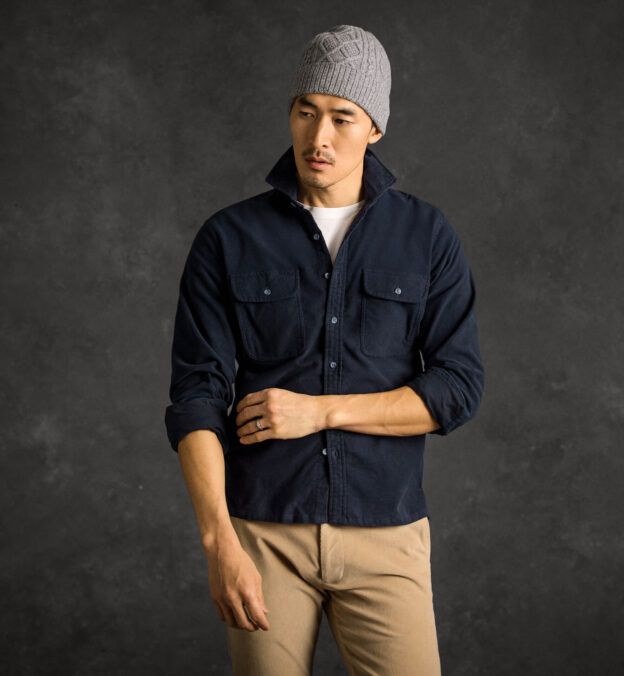Overshirts are meant to have a more casual and boxy fit than your business and formal dress shirts have. As such, we recommend you adjust your usual shirt size and save a separate size specifically for overshirts.

An overshirt with a Straight Hem.
Chest, Yoke, and Sleeve Width: Increase for Comfortable Layering
We recommend increasing the Chest Width, Sleeve Width, and Yoke Width of your regular dress shirt size when creating an overshirt size in order to accommodate a few pieces, such as a dress shirt, t-shirt, and/or sweater, layered underneath the overshirt.
Chest Width: Increase by about 1” (2” total circumference) from that of your dress shirt size.
Sleeve Width: Increase by at least 0.5”-1” (1”-2” total circumference) from that of your dress shirt size.
Yoke Width: Increase by about 0.5” to 0.7” from that of your dress shirt size.

An overshirt in a chamois fabric.
Midsection and Bottom Width: A Straight, Boxy Fit is Ideal
Increasing the Midsection and Bottom Widths of your usual dress shirt size will help to achieve the loose, less tapered fit that works best for an overshirt. To specify the Bottom Width, click ‘Auto’ and manually change the measurement. The Midsection Width should be no more than 0.5″ smaller than the Bottom Width in order to avoid creating a curved silhouette. The goal is to achieve a roomy, straight fit from the chest to the hem by setting the Midsection and Bottom Widths relatively close to the Chest Width.
Straight Hem: Reduce the Shirt’s Back Length
Overshirts are typically worn untucked with a Straight Hem and the appropriate Shirt Back Length is all the more crucial to achieving the perfect fit. We recommend reducing the Back Length for shirts designed with Straight Hems because the lack of rise and gussets at the sides of the shirt makes Straight Hem shirts look and feel longer than Rounded Hem shirts when they’re untucked. The Back Length for a casual shirt with a Rounded Hem should be 1.5”-3” shorter than that of a traditional tucked-in dress shirt. If you’re basing your overshirt size on a casual untucked shirt size, however, it is best to set the Back Length 0.5” shorter than that of your typical untucked shirt with a Rounded Hem.

